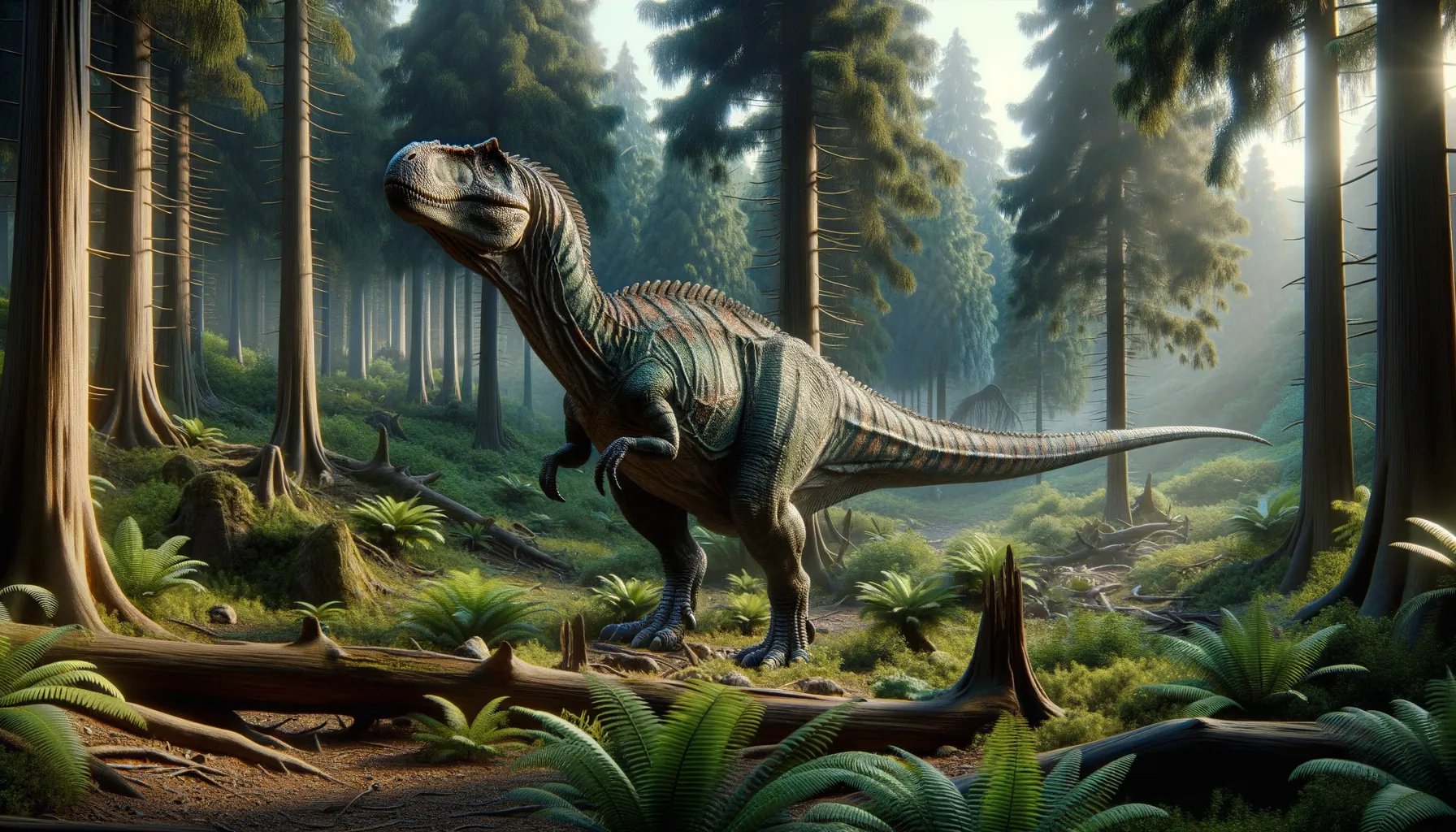
Sinopeltosaurus
A fortress on four sturdy legs.
Period
Cretaceous
Length
Roughly 6 to 8 meters long.
Height
Approximately 2.5 meters tall at the hips.
Weight
Estimated around 2,000 to 4,000 kilograms.
Sinopeltosaurus was a heavily-armored dinosaur known for its dense protective body plates and tail club used for defense. It roamed the earth during the Cretaceous period, thriving in dense forest habitats. Despite its cumbersome appearance, it was well-adapted to its environment, using its bulk and armor to deter predators. The creature’s fossil records primarily found in China reflect its significant role in the local ecosystem of the time.
Diet
Sinopeltosaurus was an herbivore, feeding primarily on low-lying vegetation such as ferns and cycads. Its beak-like mouth helped it strip leaves and forage efficiently in dense forest environments.
Hunting
Being an herbivore, Sinopeltosaurus did not actively hunt. Instead, it spent much of its time foraging for plants and defending itself against potential predators with its heavily-armored body.
Environmental challenges
Sinopeltosaurus faced numerous environmental challenges, including fluctuating climates that impacted its food sources. The encroaching deserts of its era posed additional threats to its forageable territories. Furthermore, competition with other herbivores over limited resources often led to tense encounters, where its armored body provided a crucial advantage.
Speed
Estimated to be relatively slow due to heavy body armor.
Lifespan
Possibly 10 to 20 years based on similar dinosaurs.
First discovery
First discovered in China in the early 21st century.
Fun Facts
- Sinopeltosaurus is known for its armored body, which helped protect it from predators.
- This dinosaur lived during the Early Cretaceous period, around 125 million years ago.
- Sinopeltosaurus's name means 'Chinese shield lizard', reflecting both its armor and its place of discovery in China.
- It belonged to a group of dinosaurs called Thyreophora, which also includes well-known species like Stegosaurus and Ankylosaurus.
- Although Sinopeltosaurus was heavily armored, it was still relatively small, likely measuring only a few meters long.
- Unlike some of its relatives, Sinopeltosaurus's armor plates were more flexibly arranged, allowing for better movement.
- Fossil evidence suggests that Sinopeltosaurus might have lived in forested areas, feeding on low-lying plants.
Growth and Development
Like many dinosaurs, Sinopeltosaurus experienced rapid growth in its early years to reach a size less vulnerable to predators. Juveniles developed their signature armor as they matured, which was essential for self-defense. This growth pattern was crucial for survival, aiding them in adapting to their surroundings more effectively over time.
Habitat
Sinopeltosaurus inhabited semi-arid to forested regions providing ample plant material for sustenance. Its surroundings would have included varied flora, habitats teeming with life where they could graze unhindered by low trees and dense underbrush. The natural cover also offered shelter and protection from larger carnivorous dinosaurs.
Interaction with other species
Sinopeltosaurus likely had minimal interaction with predatory dinosaurs, relying on its tough armor to ward off attacks. It may have coexisted with other herbivores, sharing territories but competing for resources such as water and food. On a mutualistic aspect, it might have facilitated certain plant growth, dispersing seeds through its grazing habits.
Natural lifespan
In the wild, they might live up to two decades.
Reproduction
Sinopeltosaurus likely laid eggs in well-hidden nests, using mound-building techniques to protect them. The mothers might have provided basic care, guarding eggs from predators until hatching. Upon hatching, the young might rely on group dynamics of grazing herds to learn survival strategies.
Social behaviour
Sinopeltosaurus might have exhibited social behaviors typical of herbivorous dinosaurs, potentially forming small herds for protection. Such groups could facilitate better protection strategies against predators. These herbivores could engage in group foraging, where size in numbers provided safety and efficiency.
Fossil locations
Fossils of Sinopeltosaurus have been predominantly located in China, showcasing different insights into its anatomical structure and lifestyle. These sites have provided crucial information regarding its adaptation to the Cretaceous environment. The discovery in these areas has added valuable data to the Eastern Asian paleontological records.
